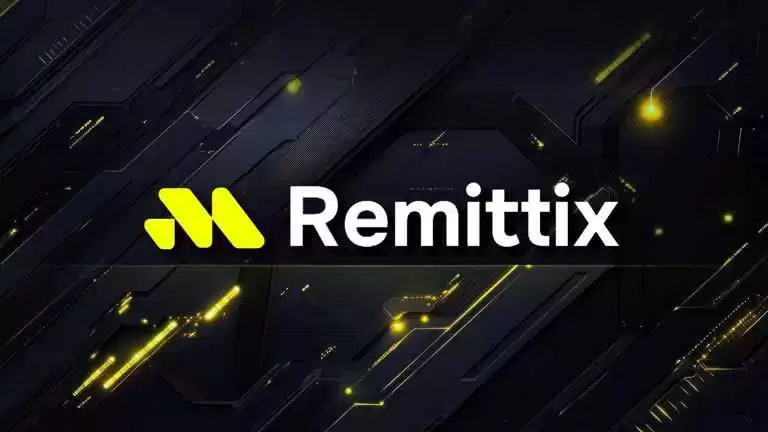 |
|
 |
|
 |
|
 |
|
 |
|
 |
|
 |
|
 |
|
 |
|
 |
|
 |
|
 |
|
 |
|
 |
|
 |
|
Cryptocurrency News Articles
Market makers are the "helpers" of new crypto projects, but the "loan option model" is being abused
Apr 21, 2025 at 01:16 pm
In the past year, the primary market of the crypto industry has been sluggish, and some of it has returned to the pre-liberation era.

The past year has seen the primary market of the crypto industry become sluggish, and some of it has returned to the pre-liberation era. In the "bear market", various human nature and "decentralized" regulatory loopholes have been exposed. In the industry, market makers should be the "helpers" of new projects, helping projects to gain a foothold by providing liquidity and stabilizing prices. However, there is a kind of cooperation method called "loan option model" that can be generally happy in the bull market, but it is being abused by some unscrupulous actors in the bear market, quietly harming small crypto projects, causing trust collapse and market chaos.
Traditional financial markets have also encountered similar problems, but they have minimized the damage by relying on mature supervision and transparent mechanisms. Personally, I think the crypto industry can learn something from traditional finance to solve these chaos and create a relatively fair ecosystem. This article will talk in depth about the operation of the loan option model, how it digs holes for projects, the comparison with the traditional market, and the current situation.
1. Loan option model: sounds good, but there are pitfalls
In the crypto market, the task of market makers is to ensure that there is enough trading volume in the market by frequently buying and selling tokens, and that prices do not fluctuate greatly because no one is buying or selling. For projects that are just starting out, it is almost necessary to find a market maker to cooperate with - otherwise it is difficult to go on the exchange and attract investors. The "loan option model" is a common way of cooperation: the project party lends a large number of tokens to the market maker, usually for free or at a very low cost; the market maker takes these tokens to the exchange to "make a market" to maintain an active market. There is often an option clause in the contract that allows the market maker to return the tokens at a certain price at a certain point in the future, or simply buy them, but they can choose not to do so.
It sounds like a win-win deal: the project gets market support, and the market maker earns some transaction spread or service fees. But the problem lies in the "flexibility" of the option terms and the opacity of the contract. The information asymmetry between the project and the market maker gives some dishonest market makers the opportunity to exploit loopholes. They use the borrowed tokens not to help the project, but to mess up the market and put their own profits first.
2. Predatory Behavior: How Projects Are Scammed
If the loan option model is abused, it can really harm the project. The most common method is "dumping": market makers dump borrowed tokens into the market, and the price is instantly depressed. Retail investors see that something is wrong and sell them, and the market is completely panicked. Market makers can profit from this, for example, by "shorting" - first selling tokens at a high price, and then buying them back at a low price when the price collapses and returning them to the project party. The difference is their profit. Or, they use option terms to "return" tokens at the lowest price, at an absurdly low cost.
This operation is devastating to small projects. We have also seen many cases where the price of tokens was cut in half within a few days, the market value evaporated directly, and the project had basically no chance of raising funds again. What's worse is that the lifeblood of crypto projects is community trust. Once the price collapses, investors either think the project is a "scam" or completely lose confidence, and the community will be dispersed. Exchanges have requirements for the trading volume and price stability of tokens. A sharp drop in prices may directly lead to delisting, and the project will basically be "cooled down."
To make matters worse, these cooperation agreements are often hidden behind non-disclosure agreements (NDAs), and outsiders cannot see the details. Most of the project teams are newbies with technical backgrounds, and their awareness of financial markets and contract risks is still weak. Faced with experienced market makers, they are completely led by the nose and have no idea what "pitfall" they have signed. This information asymmetry makes small projects the "fat meat" of predatory behavior.
3. Other pitfalls
In addition, we have also come across many cases reported by customers. In addition to the pitfalls of the "loan option model" by selling borrowed tokens to suppress prices and abusing option terms to settle at low prices, the market makers in the crypto market also have a lot of other tricks to specifically harm inexperienced small projects. For example, they will engage in "wash sales", using their own accounts or "vests" to buy and sell each other, brushing out false trading volume, making the project look very popular and attract retail investors to enter the market, but once they stop, the trading volume will immediately return to zero, the price will collapse, and the project may even be kicked out by the exchange.
There are often "invisible knives"
Disclaimer:info@kdj.com
The information provided is not trading advice. kdj.com does not assume any responsibility for any investments made based on the information provided in this article. Cryptocurrencies are highly volatile and it is highly recommended that you invest with caution after thorough research!
If you believe that the content used on this website infringes your copyright, please contact us immediately (info@kdj.com) and we will delete it promptly.
-

-

-

-

- El Salvador, the world's first country to adopt Bitcoin as legal tender, is still acquiring Bitcoin despite comments from the International Monetary Fund (IMF) appearing to claim the opposite.
- Apr 27, 2025 at 11:10 pm
- The treasury of El Salvador acquired 7 Bitcoin (BTC) worth over $650000 in the seven days leading up to April 27, blockchain data from El Salvador's Bitcoin Office shows.
-

-

-

-

-



























































